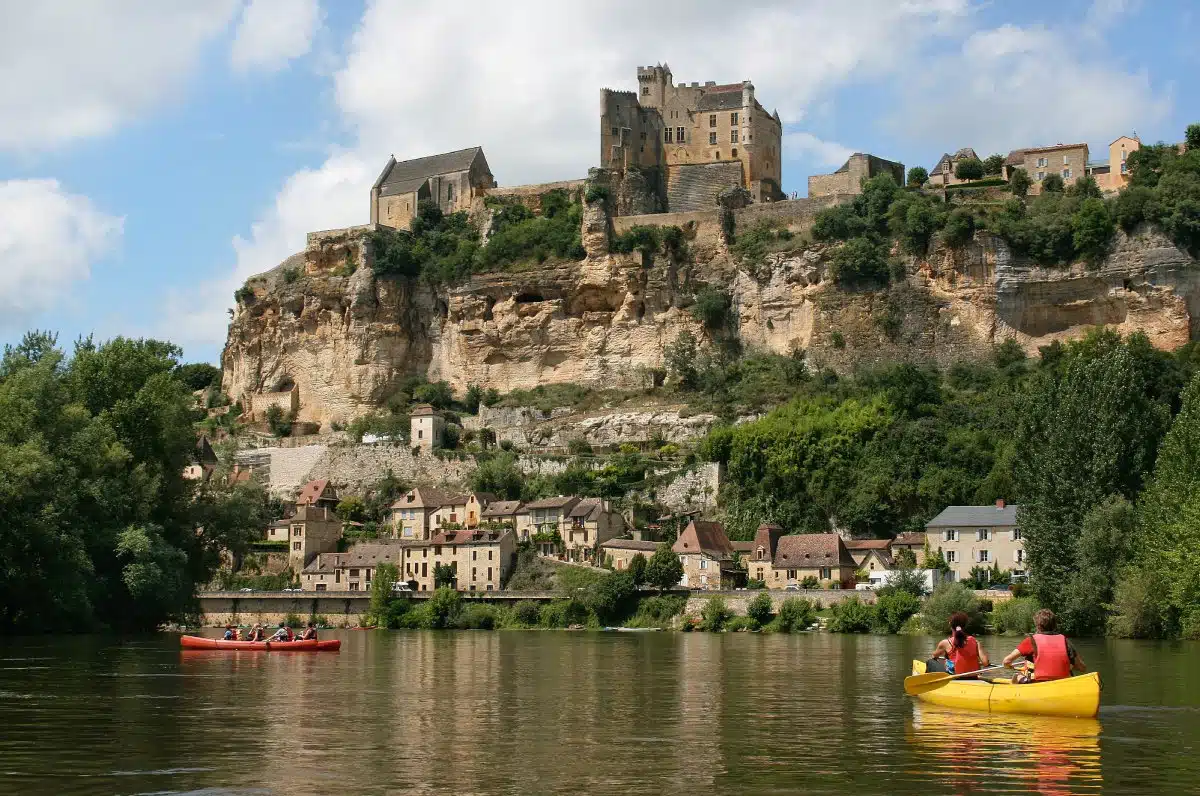Embarking on a canoe camping adventure combines the tranquil pleasure of paddling through serene waters with the excitement of camping in the wilderness. This guide is for enthusiasts seeking to immerse themselves in nature’s quietude, away from the bustling pace of modern life. It highlights destinations renowned for their natural beauty, unique ecosystems, and the opportunity to explore landscapes accessible only by water. From the remote expanses of Alaska’s Noatak River to the historic waterways of the Dordogne in France, each location offers a distinct experience set against the backdrop of breathtaking scenery and rich biodiversity. This guide provides practical advice on the optimal times to visit, how to get there, and insider tips to enhance your journey, ensuring a memorable and profound connection with the natural world.
1. The Boundary Waters Canoe Area Wilderness, Minnesota, USA
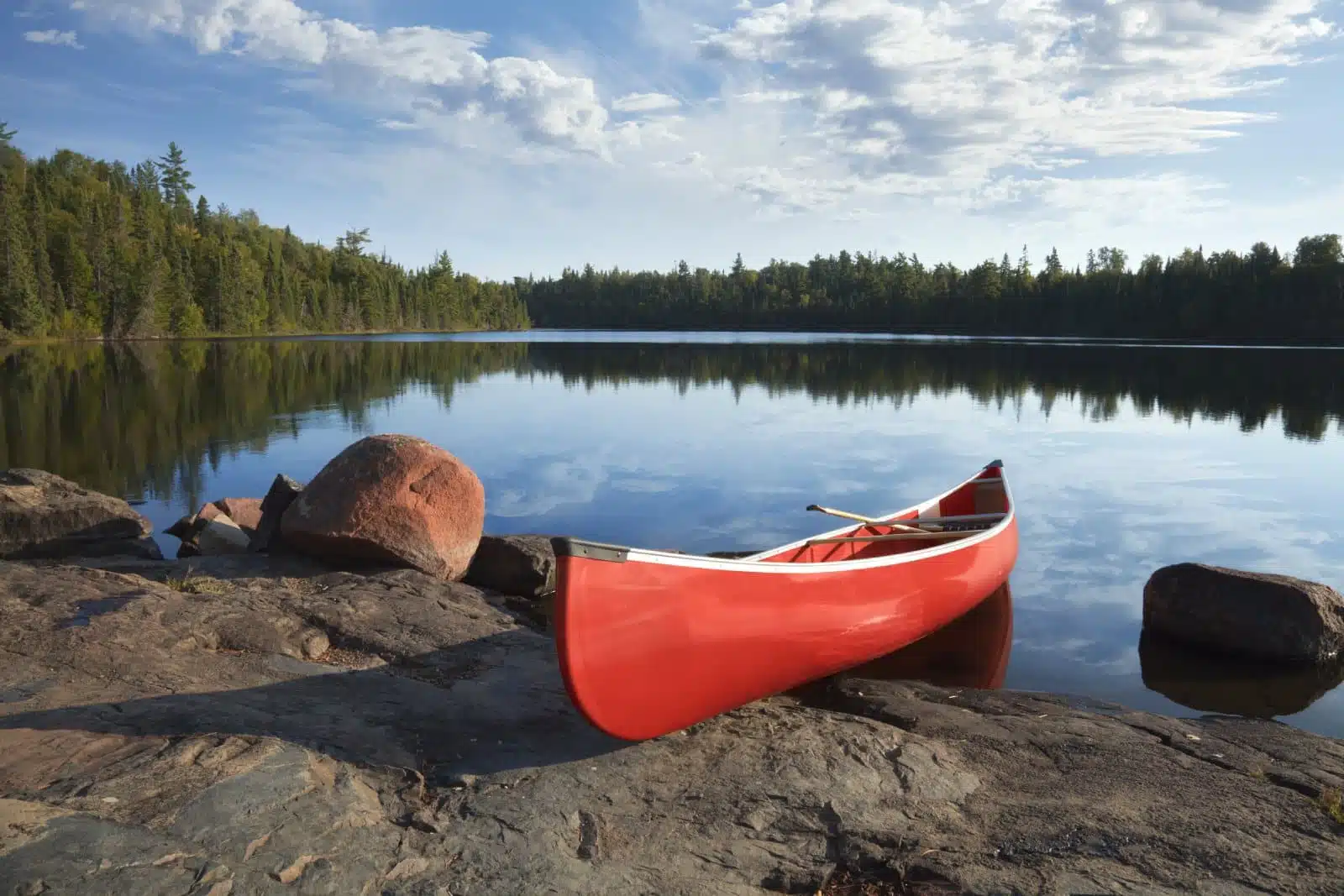
Image Credit: Shutterstock / Dan Thornberg
The Boundary Waters Canoe Area Wilderness (BWCAW) in northern Minnesota is a pristine labyrinth of lakes and rivers spread over a million acres of wilderness. With its clear waters and untouched forests, this area offers over 1,200 miles of canoe routes and more than 2,000 designated campsites. Paddling through the BWCAW, you’ll navigate waters that meander through dense forests, past rocky cliffs, and around serene islands, offering an unparalleled opportunity to disconnect from the modern world and immerse yourself in nature. Wildlife sightings, including moose, beavers, and various birds, add to the wilderness experience. The BWCAW’s extensive network of waterways allows for trips of varying lengths and difficulties, making it suitable for both beginners and experienced paddlers.
Insider’s Tip: To truly experience the solitude and tranquility of the BWCAW, plan your trip for the shoulder seasons — late spring or early fall. You’ll avoid the peak summer crowds and the mosquitoes, and the changing seasons add a dramatic backdrop to your adventure.
When to Travel: Late May to September offers the best weather for canoe camping in the BWCAW, with warmer temperatures and longer days. However, September also provides the added beauty of fall foliage.
How to Get There: The nearest major airport is in Duluth, Minnesota, about two hours away by car from the entry points to the BWCAW. Car rentals are available at the airport, providing the most straightforward way to reach the wilderness area.
2. Algonquin Provincial Park, Ontario, Canada
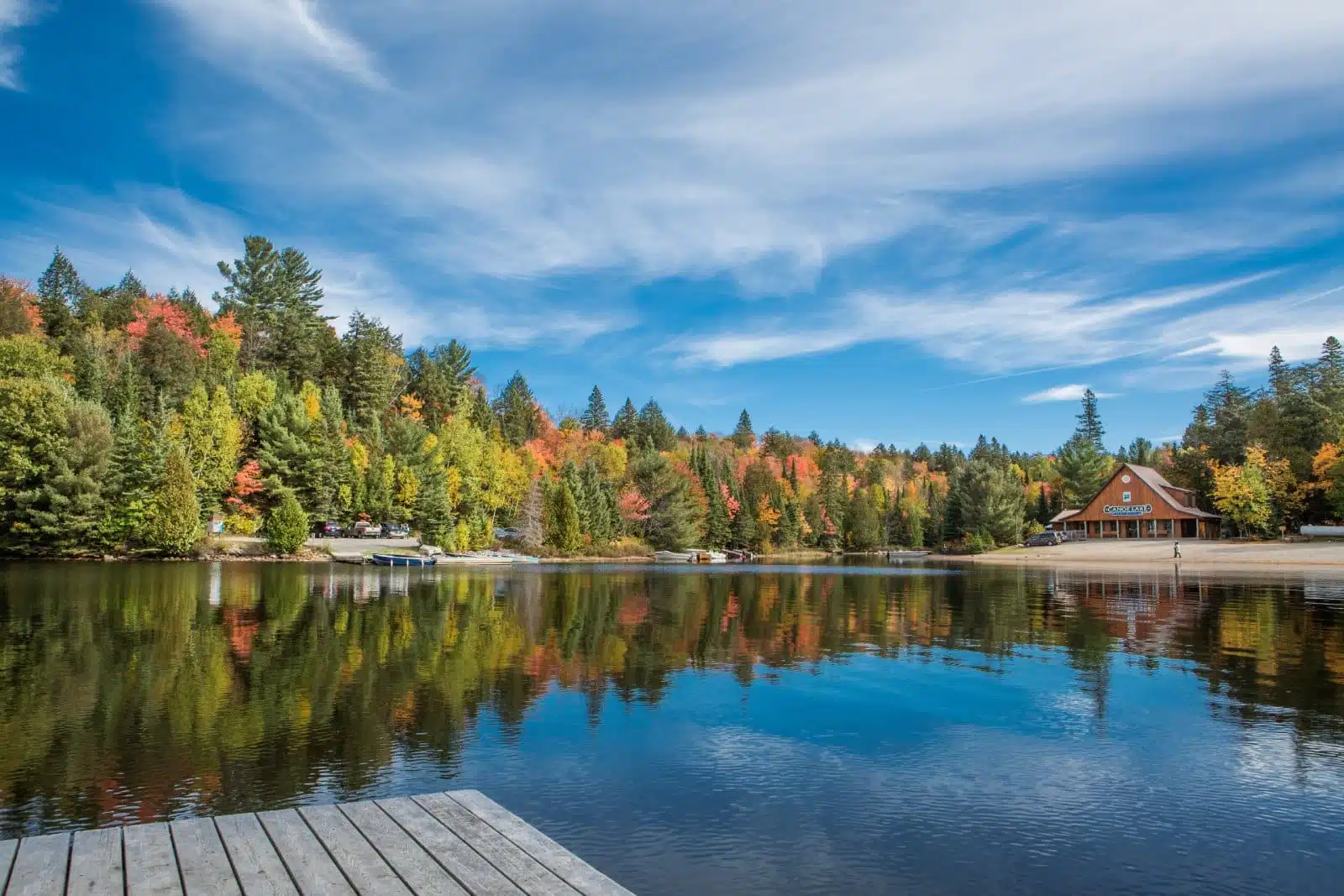
Image Credit: Shutterstock / Ping Ye
Algonquin Provincial Park is one of Canada’s premier canoe camping destinations between Georgian Bay and the Ottawa River in Ontario. With over 1,500 lakes and 745 miles of rivers and streams, Algonquin offers a vast network of canoe routes ranging from day trips to week-long adventures. The park’s mixed forests, rugged terrain, and abundant wildlife, including moose and loons, create a quintessentially Canadian wilderness experience. Algonquin’s backcountry campsites, accessible only by canoe, provide an increasingly rare sense of solitude and connection with nature. The park also has a rich history, with several cultural and educational resources available to visitors, including the Algonquin Logging Museum and the Algonquin Art Centre.
Insider’s Tip: Consider a guided canoe trip for a unique Algonquin experience. These guided tours can offer insights into the park’s ecology, history, and wildlife, enhancing your wilderness adventure.
When to Travel: The best time for canoe camping in Algonquin Provincial Park is from late June to early September when the weather is most favorable for paddling and camping.
How to Get There: The closest major city is Toronto, approximately three hours away by car. Renting a car from Toronto and driving to Algonquin allows for flexibility in exploring the park’s vastness.
3. Sarek National Park, Sweden

Featured Image Credit: Shutterstock / everst
Sarek National Park in northern Sweden is a remote wilderness area known for its dramatic landscapes, including mountains, glaciers, and fast-flowing rivers. It’s a challenging destination suited for experienced paddlers and wilderness campers prepared for the rugged conditions. Sarek does not have marked trails or designated campsites, offering a true adventure in one of Europe’s last great wildernesses. The park’s rivers provide thrilling whitewater paddling opportunities, while the surrounding landscapes offer breathtaking beauty and solitude. Wildlife in Sarek includes reindeer, Arctic foxes, and a variety of bird species, making it a fantastic destination for nature enthusiasts.
Insider’s Tip: Hire a local Sami guide for part of your journey. Their land, wildlife, and weather knowledge can enhance your experience and provide valuable insights into the local culture and environment.
When to Travel: The brief Arctic summer from late June to August is the best time to visit Sarek National Park, with milder weather and longer daylight hours.
How to Get There: The nearest major airport is in Luleå, Sweden. From Luleå, it’s a combination of train and bus rides to reach the outskirts of Sarek National Park, followed by a hike or helicopter ride into the park itself.
4. The Dordogne River, France
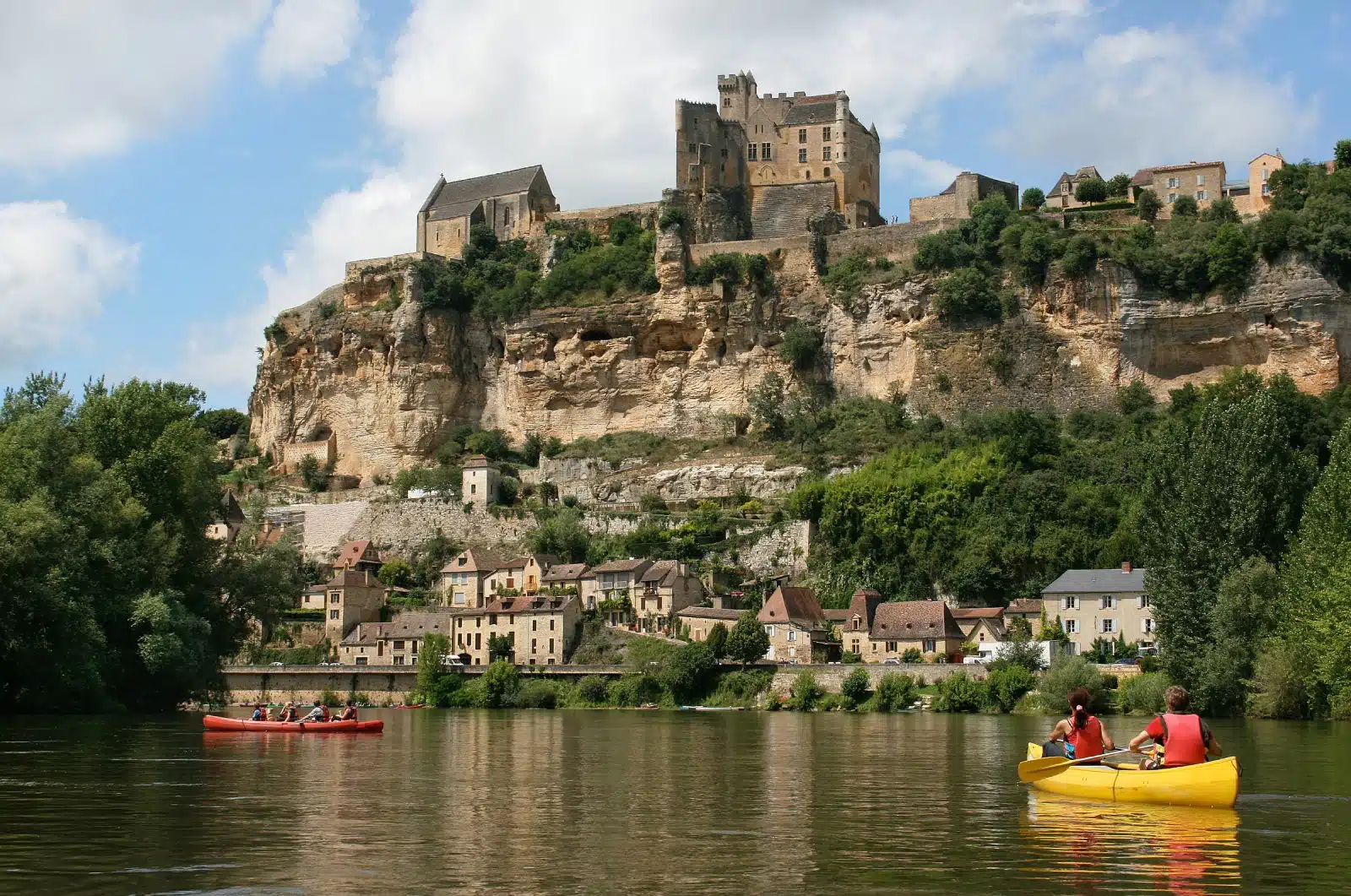
Image Credit: Shutterstock / canadastock
The Dordogne River in southwestern France offers a canoeing experience rich in history and natural beauty. Paddling down the Dordogne, you’ll pass medieval towns, ancient castles, and prehistoric caves that tell the story of human history in this region. The river flows through diverse landscapes, from rugged cliffs and dense forests to tranquil countryside, providing a serene backdrop for your journey. The Dordogne is suitable for paddlers of all skill levels, with calm waters interspersed with mild rapids. Along the way, you can stop at riverside villages to explore local markets, sample regional cuisine, and immerse yourself in French.
Insider’s Tip: Make a point to visit the historic village of Rocamadour, which appears to cling to the side of a cliff along the river. Its stunning architecture and sacred sites make it a worthwhile detour from your canoeing adventure.
When to Travel: The optimal time to visit the Dordogne River for canoeing activities is from late spring to early autumn (May through September), when the weather is warm and the river levels are conducive to paddling.
How to Get There: The Dordogne region is accessible via several airports, with Bergerac Dordogne Périgord Airport being the most convenient for direct access to the river. Alternatively, travelers can fly into Bordeaux or Toulouse and rent a car for a scenic drive to the Dordogne. The region is also well-served by France’s railway network, offering a comfortable journey from major French cities to local stations near the river.
5. The West Highlands, Scotland
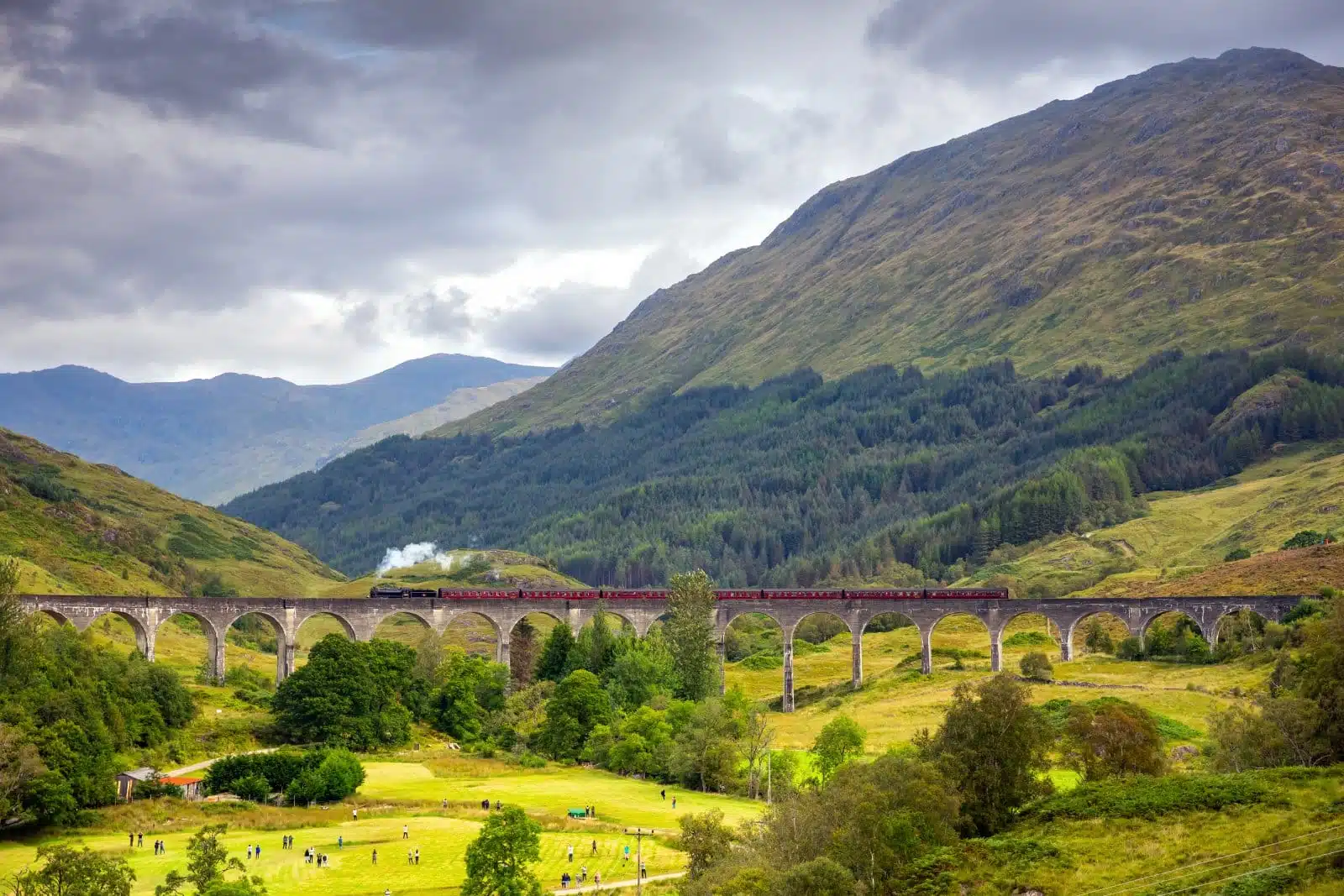
Image Credit: Shutterstock / Creative Screen
Scotland’s West Highlands offer a dramatic and rugged landscape for canoe camping, with lochs (lakes) and rivers set against towering mountains and deep glens. The Great Glen Canoe Trail stretches from Fort William to Inverness is a popular route, taking paddlers through some of Scotland’s most iconic scenery, including Loch Ness. The trail is well-suited for multi-day canoe camping trips, with designated camping spots along the way. The region’s rich history, including ancient castles and battle sites, adds an intriguing layer to the outdoor adventure. The remote setting and the often-challenging Scottish weather make this destination best suited for more experienced paddlers.
Insider’s Tip: Keep an eye out for the elusive Loch Ness Monster as you paddle through the loch’s mysterious waters. While sightings are rare, the legend adds an element of fun and mystery to the journey.
When to Travel: The best period for visiting the West Highlands for canoeing is from late spring to early autumn (May through September), offering milder weather and longer daylight hours.
How to Get There: The nearest major airports are Glasgow and Inverness, with Glasgow offering international connections. From either airport, renting a car is the most flexible option for reaching the West Highlands, providing the freedom to explore the region’s scenic landscapes and access various canoeing starting points. Public transport options, including trains and buses, are available but may require careful planning to coordinate with specific destinations within the Highlands.
6. The Everglades National Park, Florida, USA
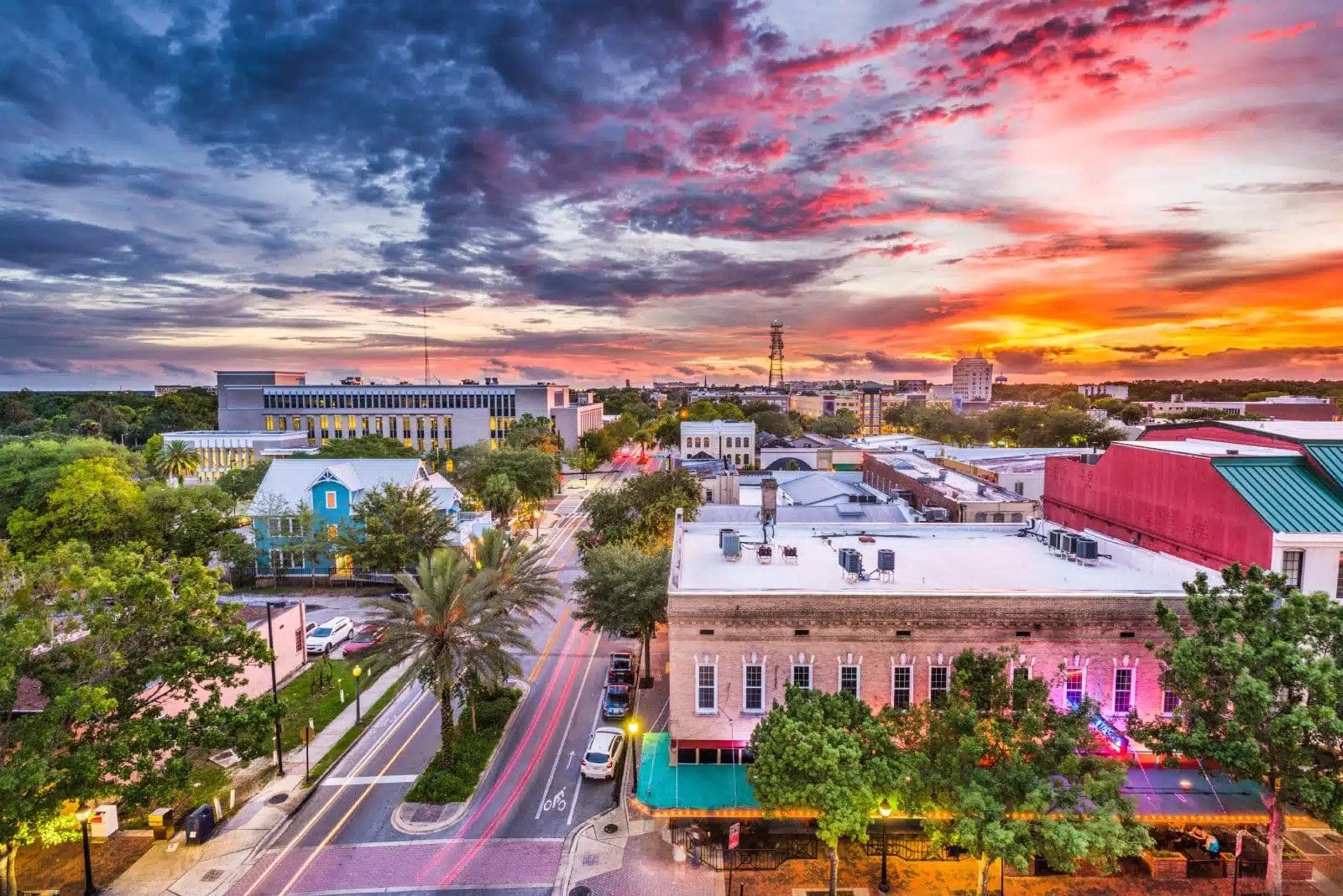
Image Credit: Shutterstock / Sean Pavone
The Everglades National Park in Florida offers a canoe camping experience unlike any other in one of the most unique ecosystems in the world. The park’s vast network of mangroves, freshwater marshes, and open waters is home to an incredible diversity of wildlife, including alligators, manatees, and countless bird species. Canoeing through the Everglades, you’ll navigate the tranquil Wilderness Waterway, a marked 99-mile route that offers various camping options, from chickees (elevated platforms) to beach sites. The Everglades’ subtropical climate allows for year-round paddling, though the best time to visit is during the cooler, drier months.
Insider’s Tip: Be sure to pack all necessary supplies, including fresh water, as resources are scarce within the park. A guided tour can enhance your experience by providing insights into the park’s unique ecology and conservation efforts.
When to Travel: The ideal time to visit Everglades National Park for canoeing is during the dry season, from November to April, when weather conditions are cooler and mosquitoes are less prevalent.
How to Get There: The main gateway to Everglades National Park is Miami, with Miami International Airport as the closest major airport. From Miami, the park can be accessed by car in approximately one hour, making it an easy drive to one of its visitor centers, such as the Ernest F. Coe Visitor Center near Homestead or the Shark Valley Visitor Center on the Tamiami Trail.
7. The Yukon River, Canada
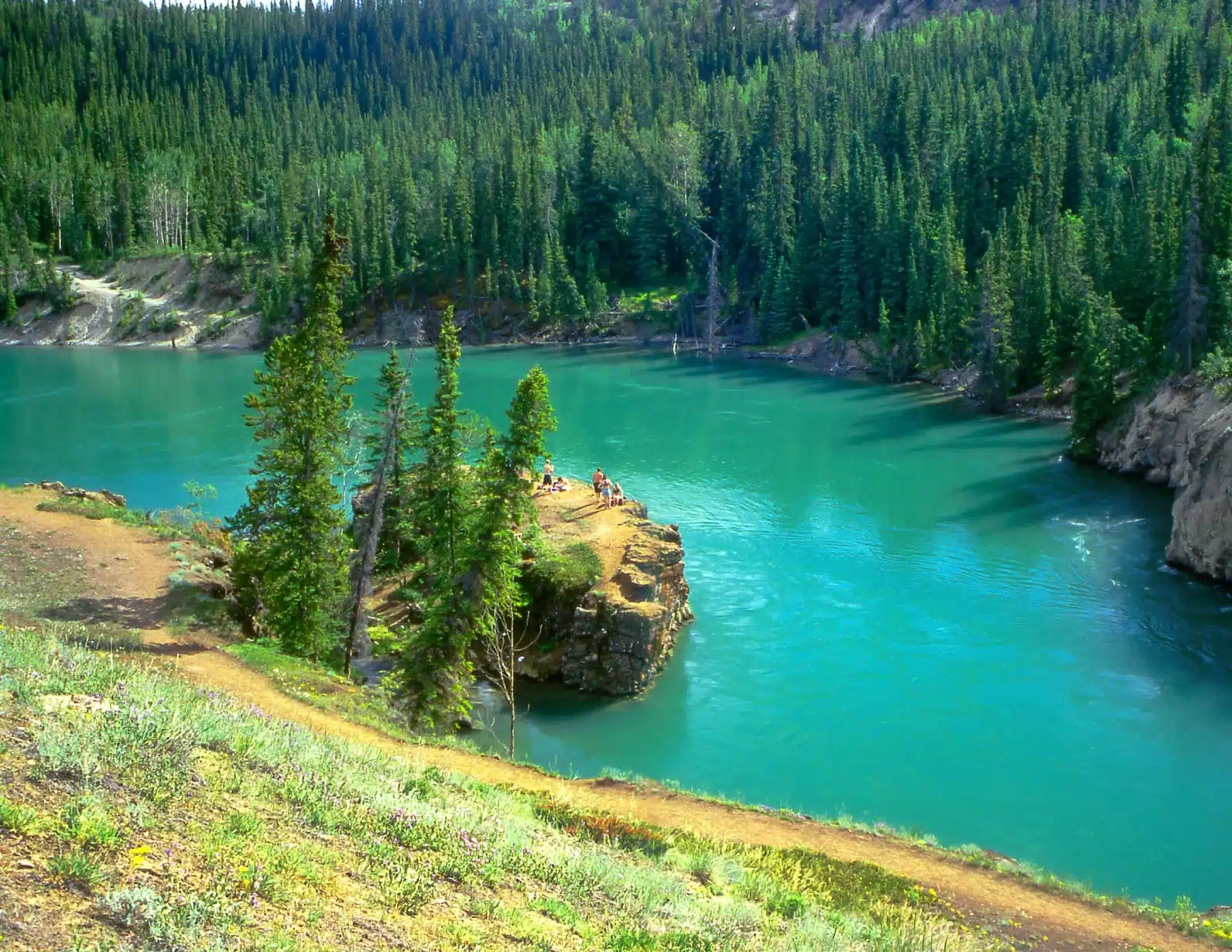
Image Credit: Shutterstock / Pecold
The Yukon River, flowing through the vast and wild landscapes of the Yukon Territory, offers an epic canoe camping journey steeped in the history of the Klondike Gold Rush. This mighty river, one of North America’s longest, serves as a lifeline through remote wilderness, providing paddlers with a true sense of adventure and isolation. The journey on the Yukon River can vary from relatively easy sections suitable for beginners to more challenging stretches that demand experience and skill. Along the way, canoeists encounter historic sites, abandoned settlements, and an abundance of wildlife, including bears, moose, and eagles, set against the backdrop of breathtaking northern scenery. The river’s clear waters and the surrounding untouched wilderness make it an ideal destination for those seeking to combine history with outdoor adventure.
Insider’s Tip: Plan a stop at Dawson City, a well-preserved Gold Rush town that offers a glimpse into the region’s rich history. The town’s vintage buildings, boardwalks, and cultural attractions provide a fascinating contrast to the wilderness experience.
When to Travel: The best time for a canoe trip on the Yukon River is from late June to early September, when the weather is warmer and the days are long.
How to Get There: The most common access point for the Yukon River is Whitehorse, the capital city of Yukon Territory. Whitehorse International Airport offers flights from major Canadian cities. From Whitehorse, outfitters can arrange transportation to various starting points along the river, depending on the length and nature of your planned trip.
8. The Soca River, Slovenia
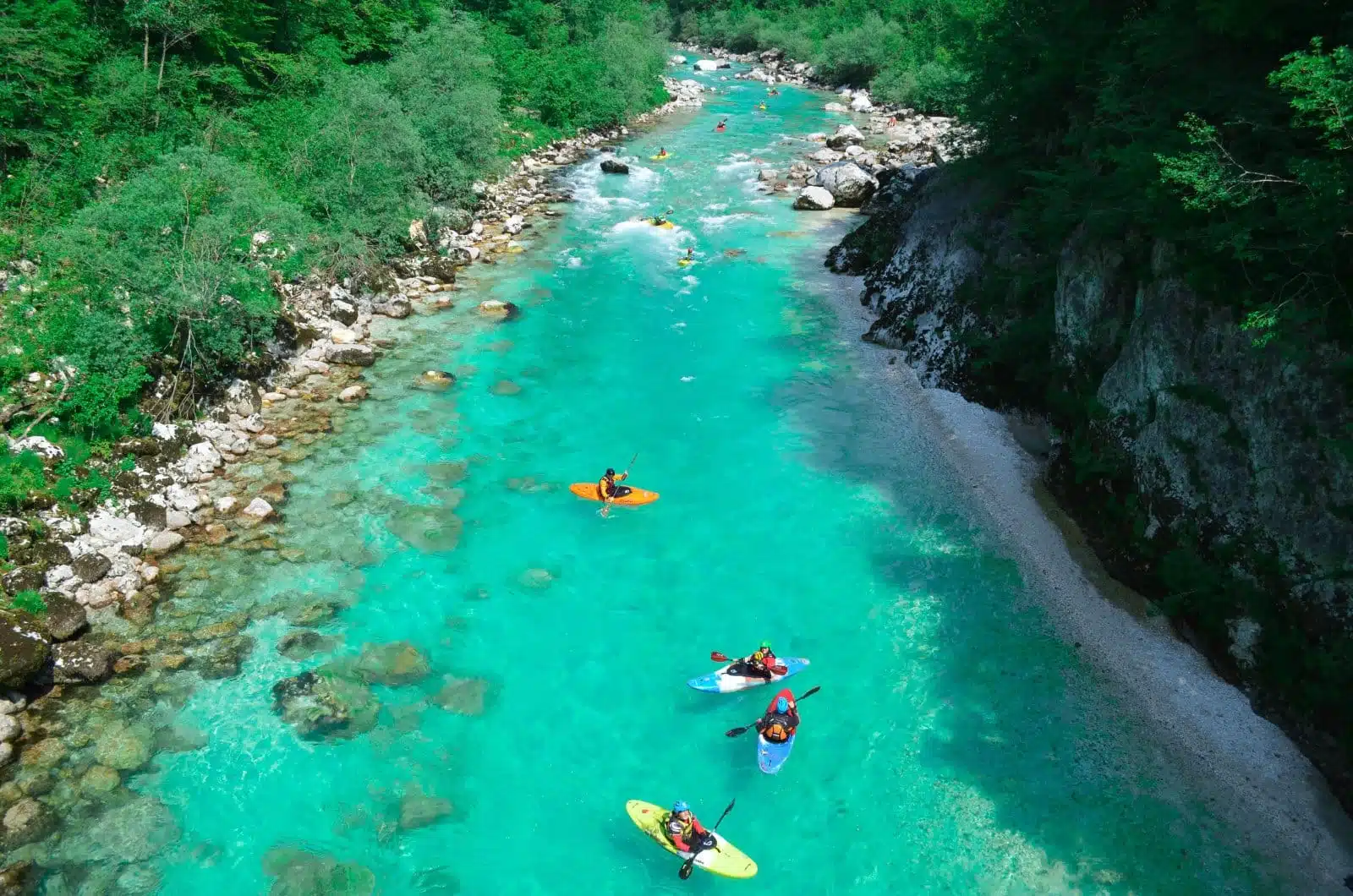
Image Credit: Shutterstock / Masa Drgan
The Soca River in Slovenia is renowned for its striking emerald green waters and the stunning alpine scenery through which it flows. This beautiful river offers a range of paddling experiences, from tranquil stretches perfect for beginners and families to more turbulent sections that challenge even seasoned canoeists and kayakers. The Soca Valley, with its lush forests, rugged mountains, and charming Slovenian villages, provides a picturesque setting for camping and outdoor activities. The river is also rich in history, having been a frontline during World War I, with several historical trails and museums in the area dedicated to this period.
Insider’s Tip: Take advantage of the numerous natural attractions along the river, including the Kozjak Waterfall, a hidden gem that’s easily accessible via a short hike. The waterfall’s serene beauty offers a perfect spot for relaxation and reflection amidst your paddling adventure.
When to Travel: Ideal months for visiting the Soca River for canoeing and kayaking are from May to September, when water levels are suitable and the weather is pleasant.
How to Get There: Ljubljana Jože Pučnik Airport in Slovenia is the nearest major international airport. The Soca Valley can be reached by car from Ljubljana in approximately 2 hours. Public transportation options include buses and trains to nearby towns such as Bovec or Kobarid, where local transport services can access specific points along the river.
9. The Noatak River, Alaska, USA
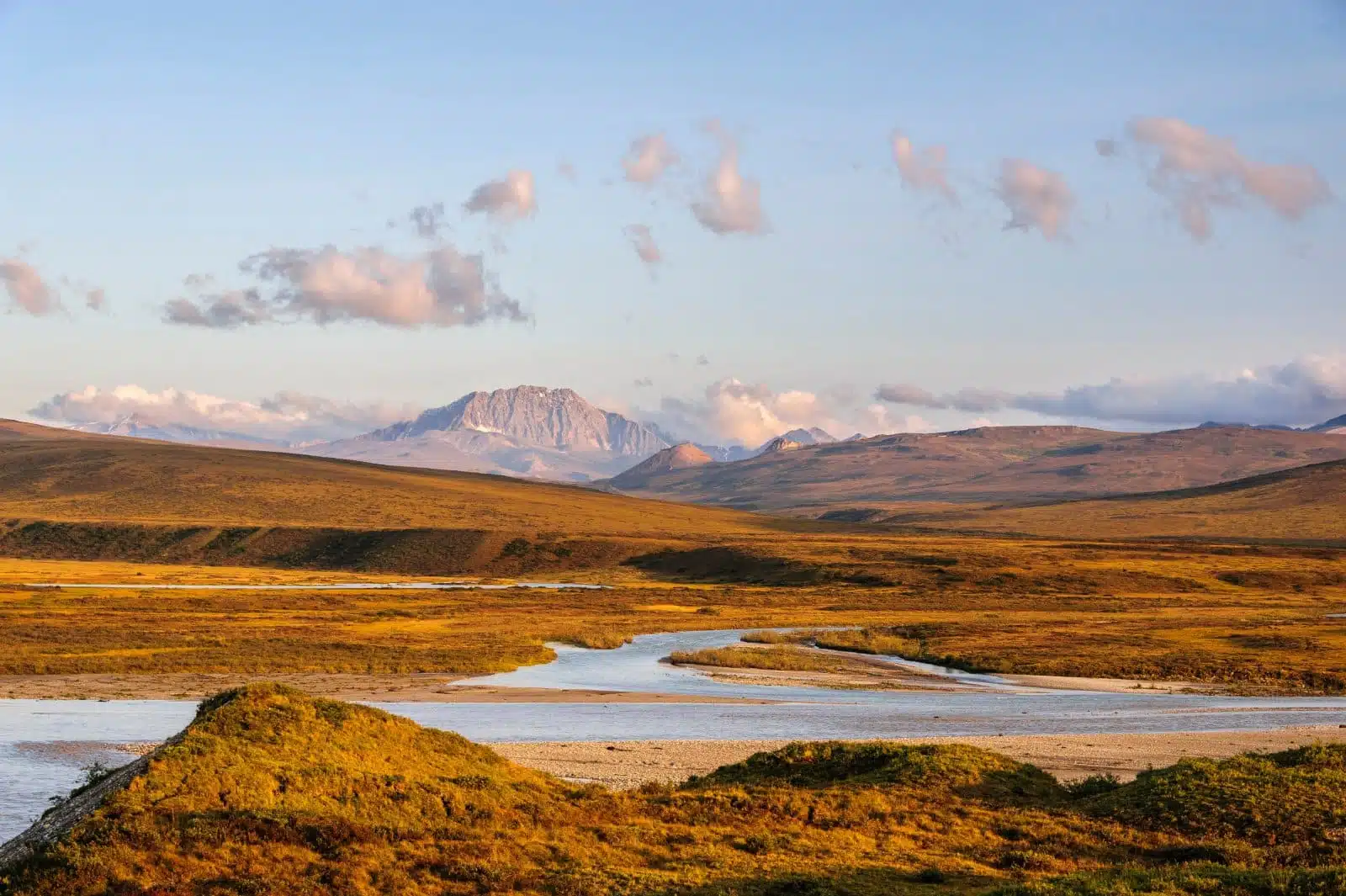
Image Credit: Shutterstock / Danita Delimont
Flowing through the Arctic wilderness of the Gates of the Arctic National Park and Noatak National Preserve, the Noatak River is one of the longest undisturbed rivers in the United States. This remote river offers an unparalleled opportunity for adventurers to immerse themselves in a landscape that has remained unchanged for thousands of years. The Noatak River basin is a haven for wildlife, including grizzly bears, wolves, and a variety of migratory birds, providing paddlers with frequent wildlife viewing opportunities. The river itself caters to a range of skill levels, with gentle flows through broad valleys as well as more challenging sections that will test the abilities of experienced canoeists. The vastness of the Alaskan wilderness, combined with the midnight sun of the Arctic summer, makes a canoe trip on the Noatak River a truly epic adventure.
Insider’s Tip: Given the remote nature of the Noatak River, consider arranging a guided expedition. A knowledgeable guide can enhance your experience by ensuring safety, providing insight into the area’s ecology and history, and navigating the logistical challenges of wilderness travel in Alaska.
When to Travel: The best period for canoeing on the Noatak River is from late June to early September, coinciding with the Arctic summer. This season offers milder weather, longer daylight hours, and active wildlife, though travelers should be prepared for cold snaps and insects.
How to Get There: The journey to the Noatak River starts with a flight to Anchorage, followed by a domestic flight to Kotzebue. From Kotzebue, access to the river is typically via a chartered bush plane, which lands at a predetermined location along the river. Due to the remote nature of the destination, utilizing a guiding company to manage logistics, including transport and equipment, is advisable.
10. The Allagash Wilderness Waterway, Maine, USA
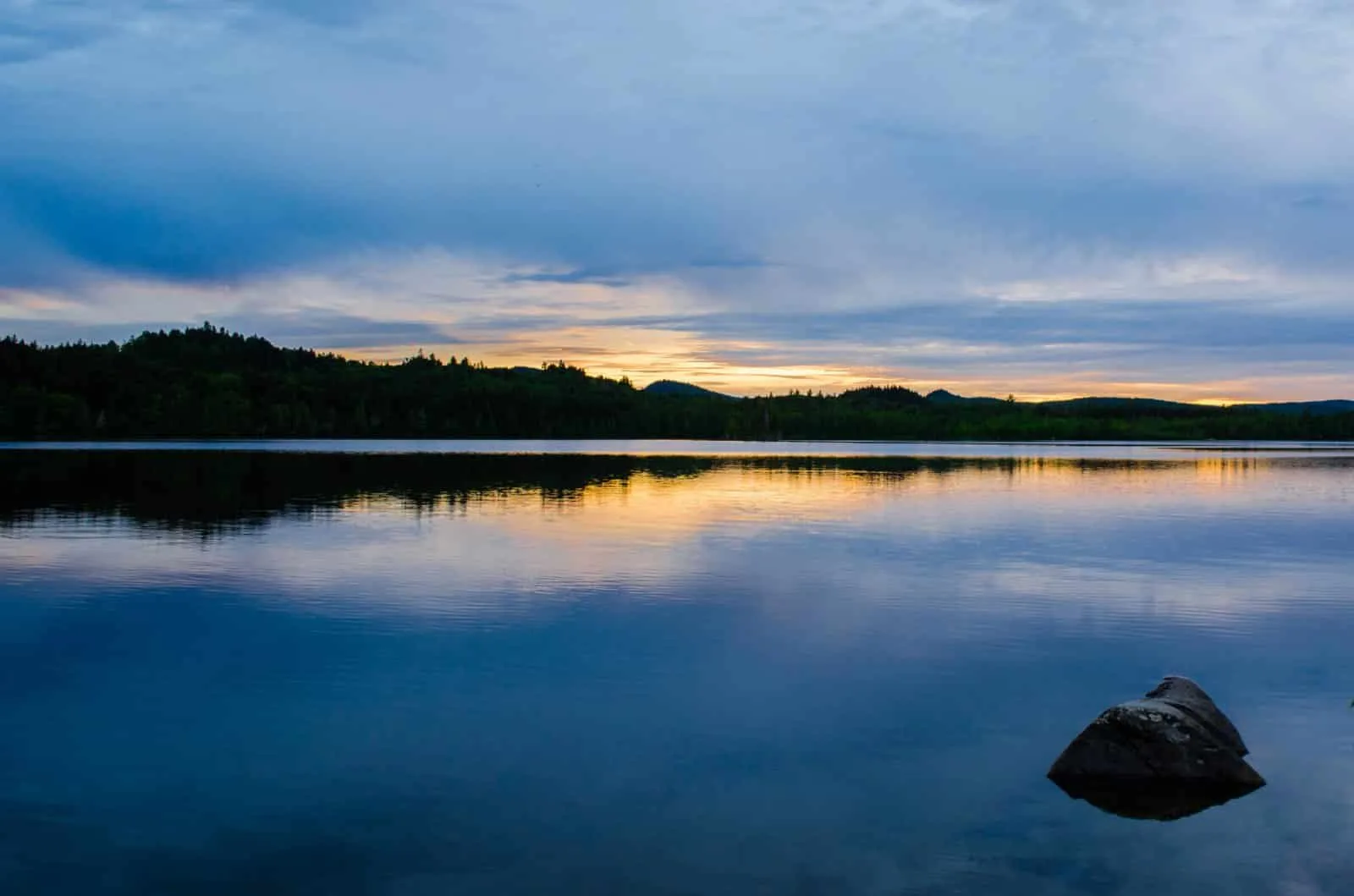
Image Credit: Shutterstock / Andrew Evertt
The Allagash Wilderness Waterway in Maine, USA, offers a quintessential wilderness canoeing experience across 92 miles of lakes, rivers, and streams in the heart of northern Maine’s dense forests. Designated as a National Wild and Scenic River, it provides paddlers with both serene and challenging passages amidst pristine natural beauty. Visitors are immersed in an environment rich with wildlife, including moose, black bears, and bald eagles, and the waters are abundant with brook trout, making it a prime location for fishing. The journey along the Allagash is an adventure into the untouched wilderness and a chance to encounter the area’s historical remnants from logging days past. This waterway is a sanctuary for those seeking solitude, adventure, and an authentic engagement with the wild.
Insider’s Tip: To maximize solitude and wildlife encounters, embark on your Allagash journey during weekdays and shoulder seasons, avoiding the busier summer months.
When to Travel: Ideal for canoeing from late May through September, with July and August offering the warmest weather. Early fall presents vibrant foliage but cooler temperatures.
How to Get There: Bangor International Airport in Maine is the closest major airport. From Bangor, it’s approximately a 3-4 hour drive to the waterway’s various access points. Car rentals are available at the airport. For those unfamiliar with the area or seeking a guided experience, local outfitters offer transportation services, equipment rentals, and guided tours, which can simplify logistics and enhance the wilderness experience.
The Bottom Line
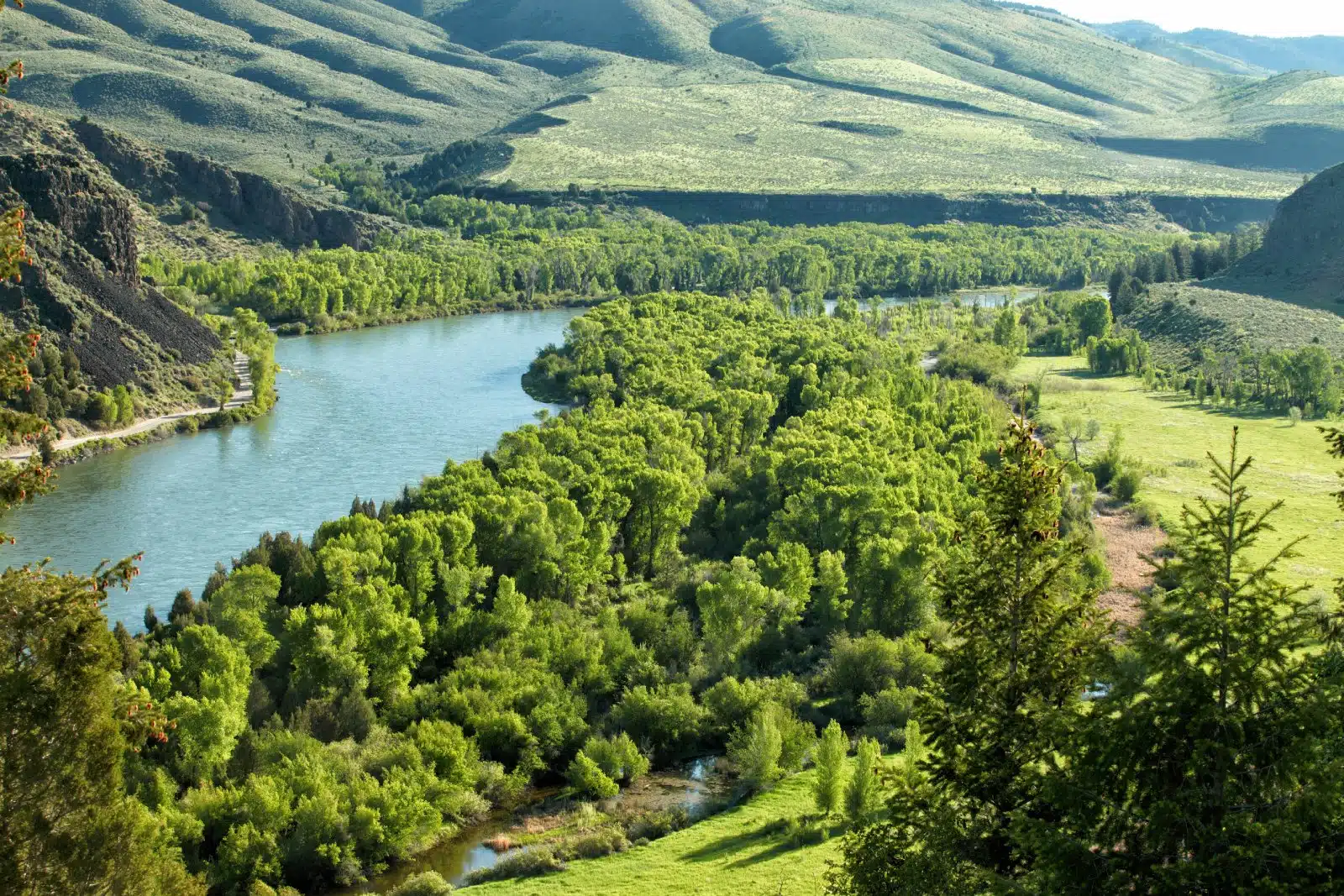
Image Credit: Shutterstock / B Brown
Canoe camping is an activity that offers physical challenge and relaxation; it’s a means to explore some of the world’s most pristine and untouched environments, connect with history, and immerse oneself in the natural world. From the remote wilderness of the Yukon River to the vibrant waters of the Soca River, each destination provides a unique backdrop for adventure, discovery, and connection with nature. As you plan your journey, remember to respect the environments you explore, prepare adequately for the challenges ahead, and embrace the transformative experience of traveling by water.
More From The Green Voyage
Top 10 Trending Travel Destinations 2024
6 Essential Banking Apps for International Travel – Managing Your Finances on the Go
Traveling With Kids – 10 Tips to Create Memorable Family Holidays
The post The 10 Best Places for Canoe Camping 2024 first appeared on The Green Voyage.
Featured Image Credit: Shutterstock / canadastock.
For transparency, this content was partly developed with AI assistance and carefully curated by an experienced editor to be informative and ensure accuracy.
Tips for Trip Success
Book Your Flight
Find an inexpensive flight by using Kayak, a favorite of ours because it regularly returns less expensive flight options from a variety of airlines.
Book Your Hotel or Special Accommodation
We are big fans of Booking.com. We like their review system and photos. If we want to see more reviews and additional booking options, we go to Expedia.
You Need Travel Insurance!
Good travel insurance means having total peace of mind. Travel insurance protects you when your medical insurance often will not and better than what you get from your credit card. It will provide comprehensive coverage should you need medical treatment or return to the United States, compensation for trip interruption, baggage loss, and other situations.Find the Perfect Insurance Plan for Your Trip
